The following reports are the outcomes of the Transport, Mobility, and Urban Planning course in the undergraduate program of Urban Planning and Development (Stadsplanering, Stadsutveckling och Planering) at Malmö University. In this project, students focused on studying two neighborhoods within the City of Malmö, specifically analyzing their transport infrastructure and travel patterns. The objective was to identify existing challenges and opportunities for creating a more sustainable city by promoting environmentally friendly modes of transportation. The reports present strategies and design solutions aimed at encouraging a greater number of individuals to adopt sustainable modes of transport.
Responsible teachers for the group project: Elnaz Sarkheyli, Christoffer Hernestig, Christina Lindkvist
Teaching Team in the Course BY260E, VT2023: Elnaz Sarkheyli, Christina Lindkvist, Christoffer Hernestig, Robert Hrelja, Helena Bohman, Guy Baeten
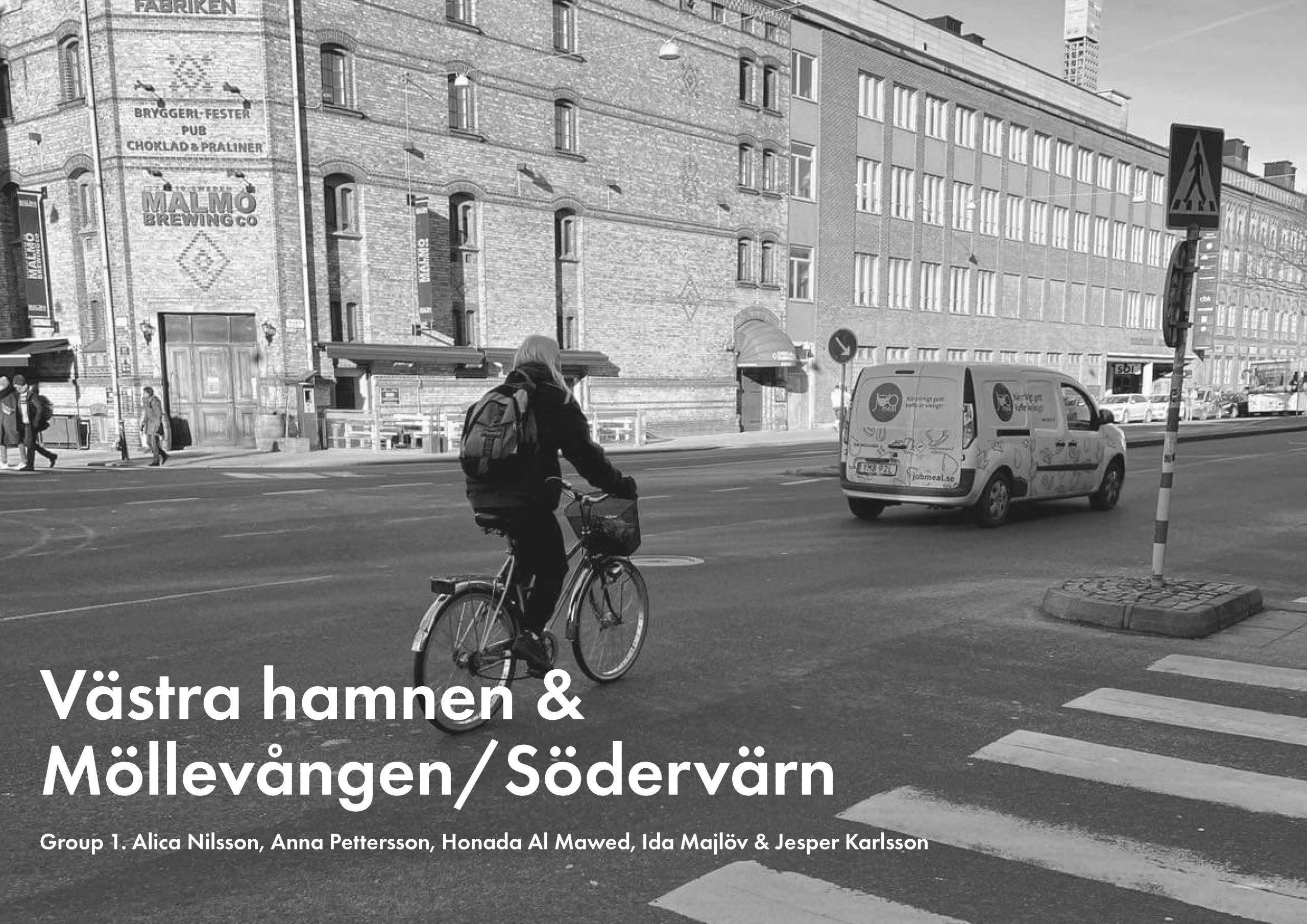 |
Västrahamnen and Möllevången, Safer Bergsgatan
Group 1 in this report investigates Västrahamnen and Möllevången as two subareas in the city of Malmö and their transport infrastructure including the street network, public transport infrastructure, biking and footpaths, parking facilities. They focus on safety issue in Bergsgatan in Möllevången. Their proposal suggests a safer street where more people can be on foot and by bicycle rather than by motorized vehicles, while at the same time increasing accessibility to the street by linking it to Malmö’s bicycle network. The proposal could promote more sustainable travel and see this as a great step toward a sustainable Malmö. |
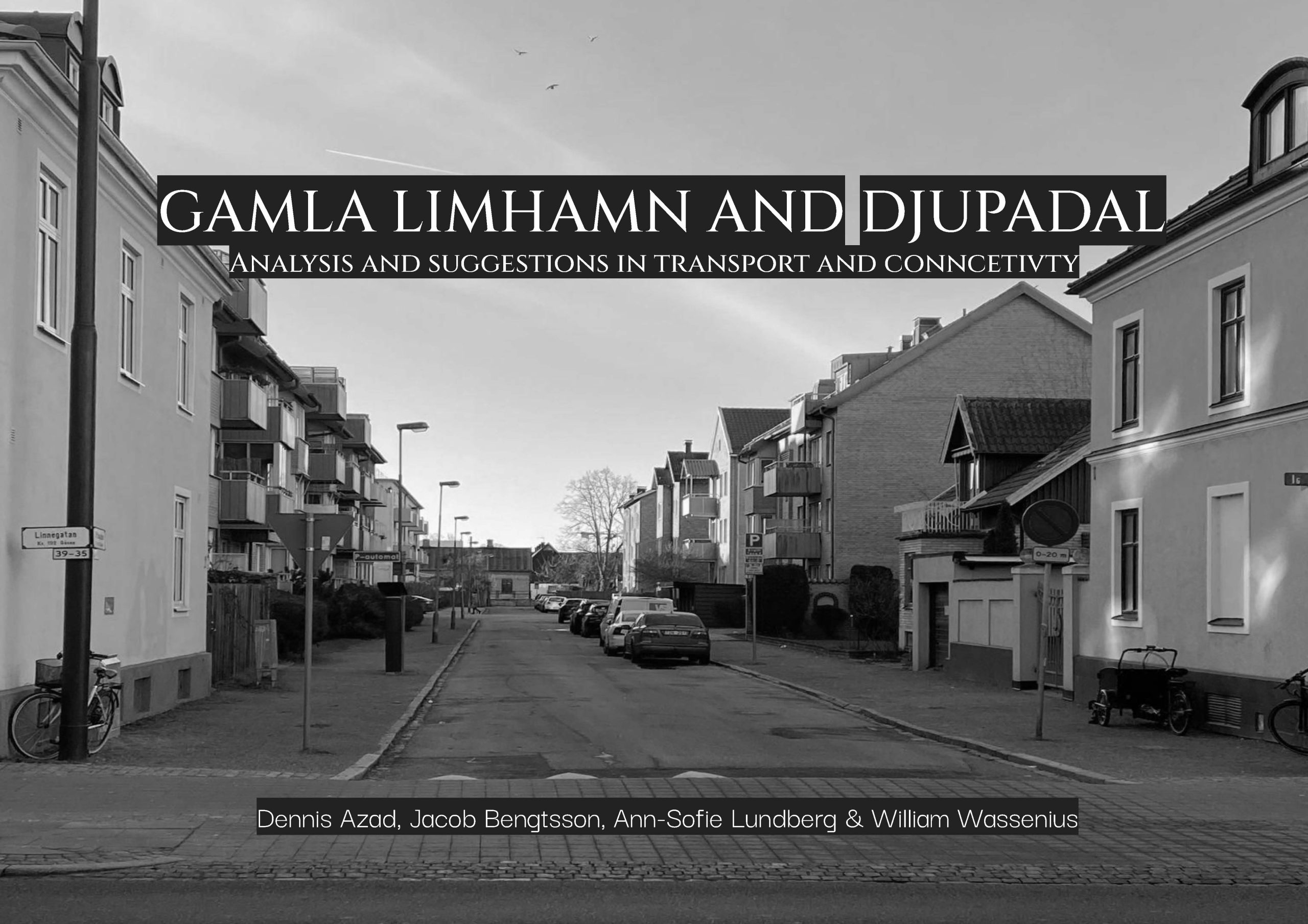
|
Djupadal and Gamla Limham, Let’s think about the Teens!
Group 2 studies the travel patterns and commuting requirements of teenagers in Djupadal and Gamla Limham. Their primary focus is on analyzing the availability of public transportation and biking facilities within these areas. Currently, cyclists in most parts of these areas are compelled to share the roads with motor vehicles, posing significant safety concerns. The group’s proposal centers around transforming the current car-centric society into a more sustainable one, with a strong emphasis on promoting the use of public transport and bicycles. |
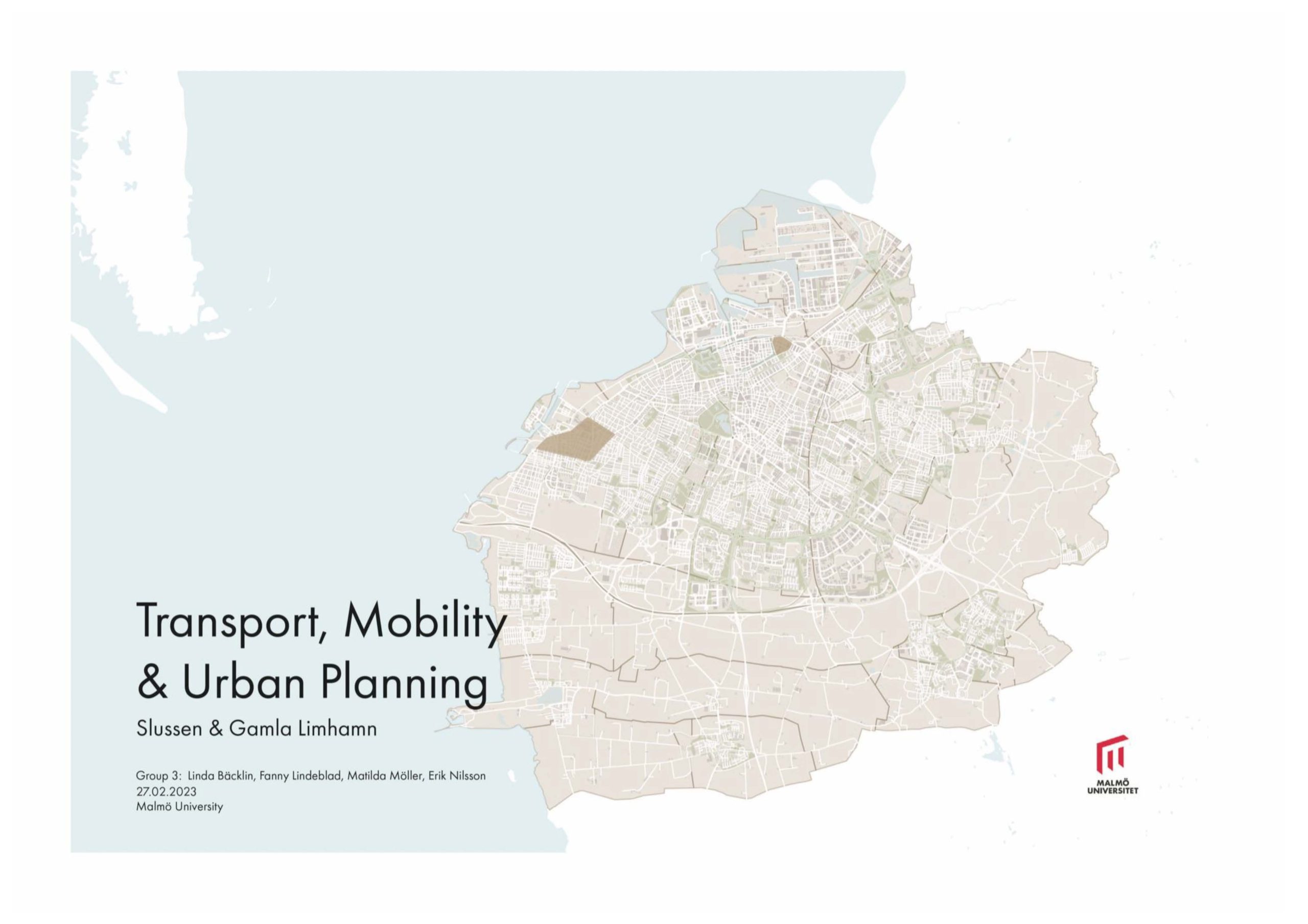 |
Slussen and Gamla Limhamn
Group 3 assess the current state of transport infrastructure, evaluate travel patterns, and address the challenges faced in two districts of Malmö: Slussen and Gamla Limhamn. The study proposes extending the super bicycle path planned by Malmö stad, redesigning the main streets in these districts as well as removing street parking on Östra Förstadsgatan and Linnégatan comfort and safety for bikers, pedestrians and public transport users can be enhanced. Moreover these strategies will induce an improved mobility and accessibility for bikers and public transport users, both within and between these districts. |
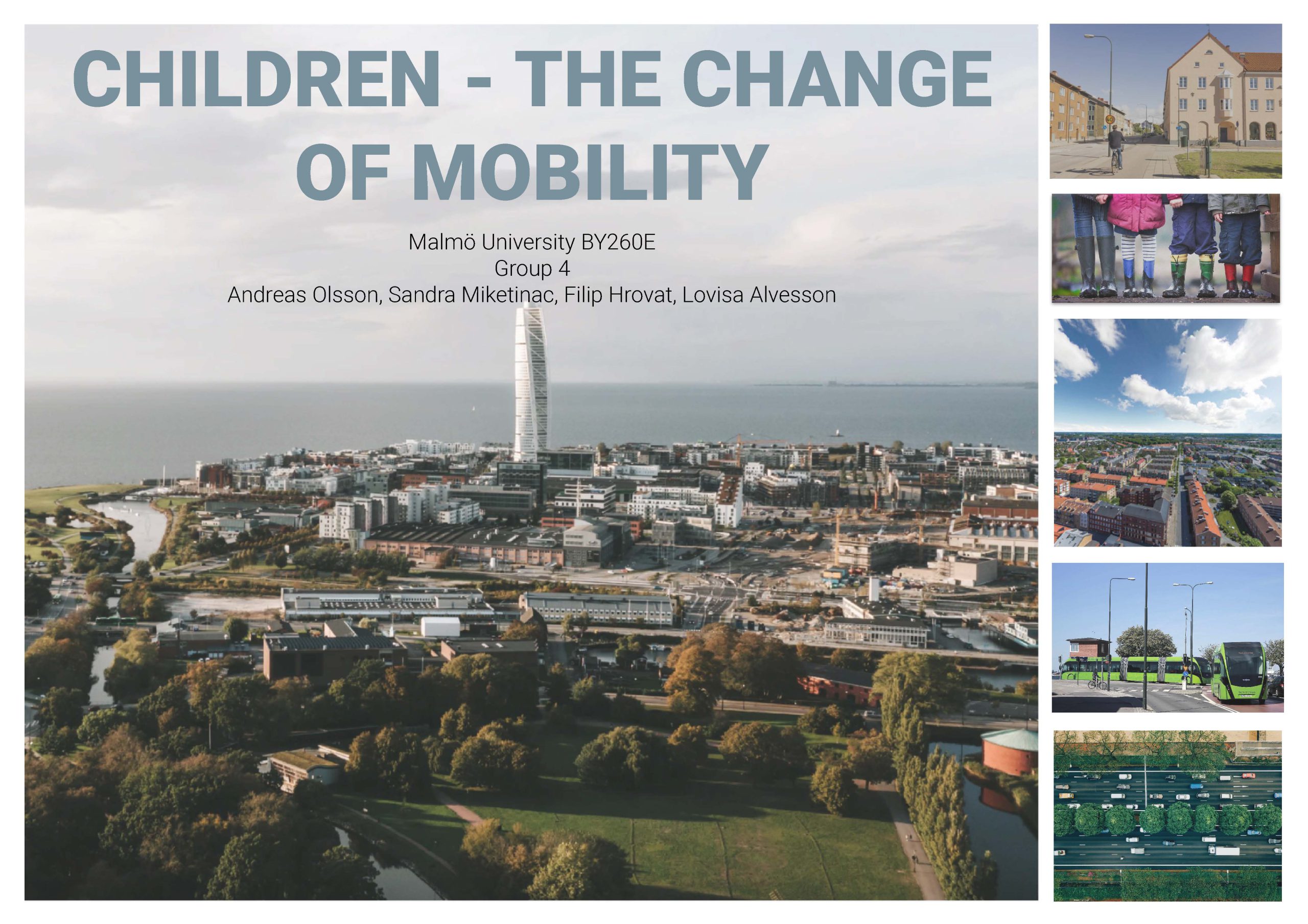 |
Children, The Change of Mobility
An inventory of KIRSEBERGSSTADEN AND VÄSTRA HAMNEN: Kirsebergsstaden and Västra Hamnen are planned in two different ways and both have potential changes for a safer and more including transport. A vulnerable group who doesn’t have access to private cars and can have trouble transporting by themselves – children, who |
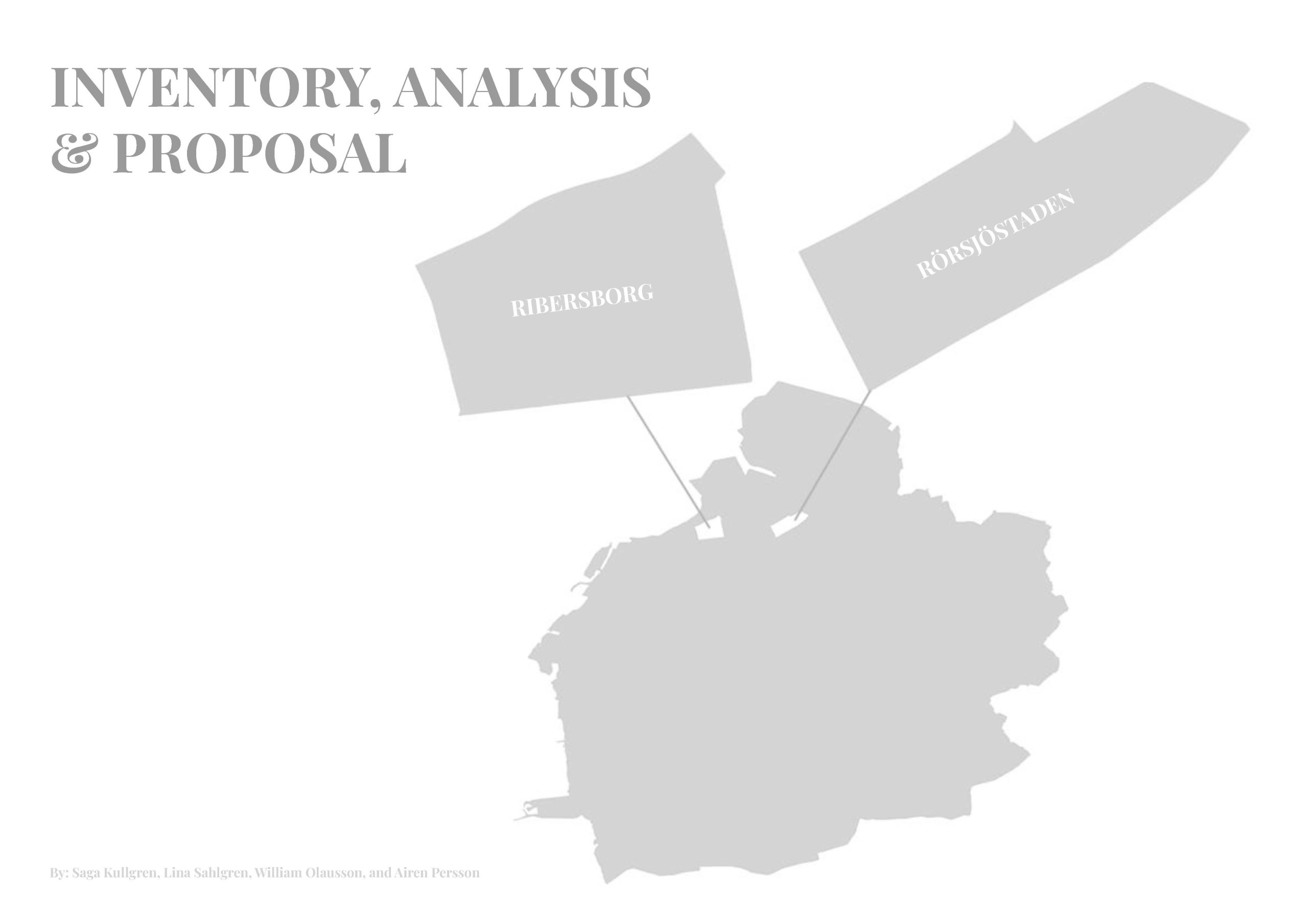 |
Inventory, Analysis and Proposal for Sustainable Transport, A Study of Rörsjöstaden and Ribersborg:
Group 5 studies and compares the transport infrastructure and travel patterns in Rörsjöstaden and Ribersborg. Their improvement proposal concerns a change in the road structure as well as adding a Malmö by |
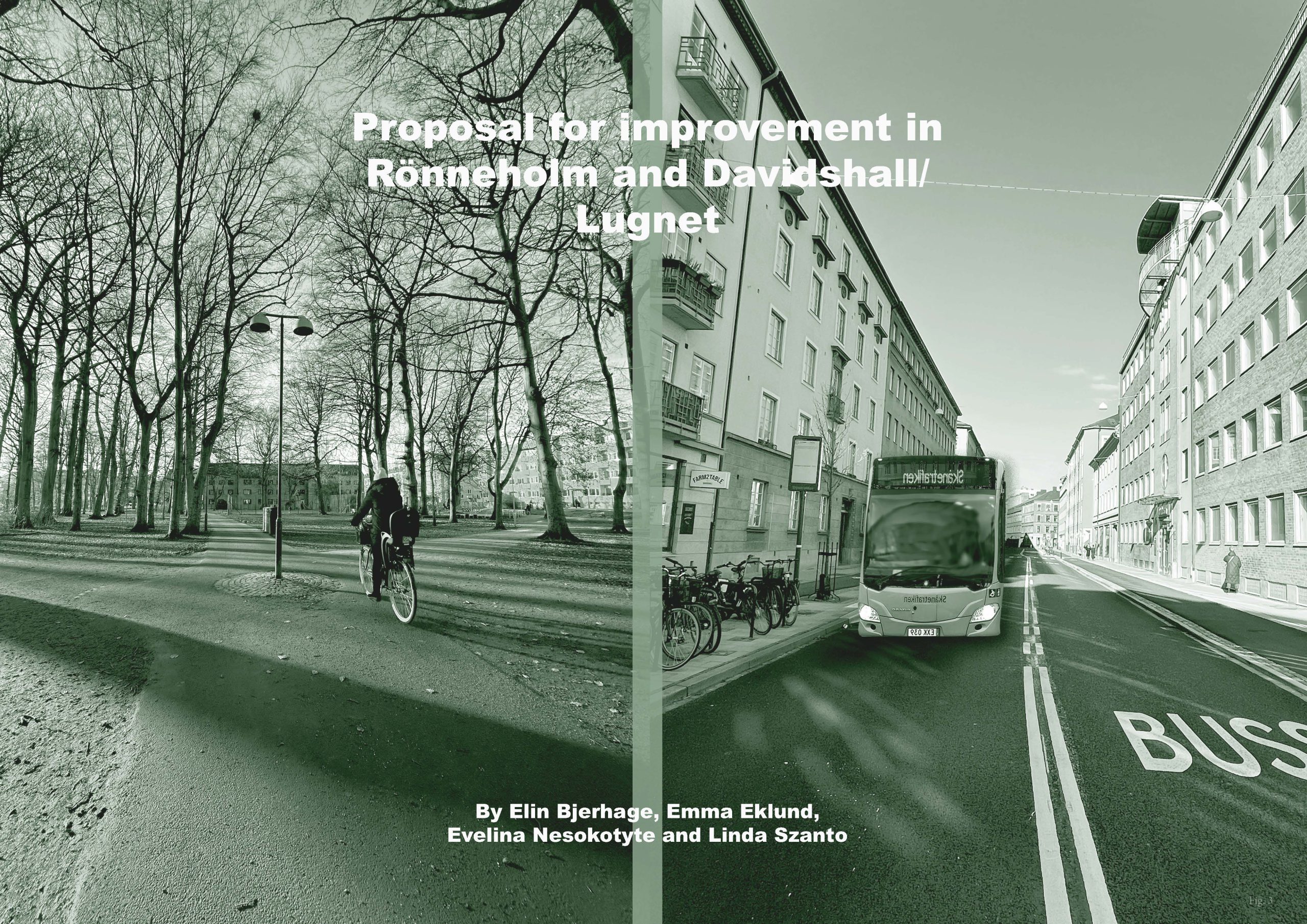 |
Proposal for improvement in Rönneholm, Davidshall and Lugnet
Following our inventory of Rönneholm, Davidshall and Lugnet, we arrived at a proposal attempting to balance incentives for furthering travel by bicycle whilst disincentivizing the use of motor vehicles. |
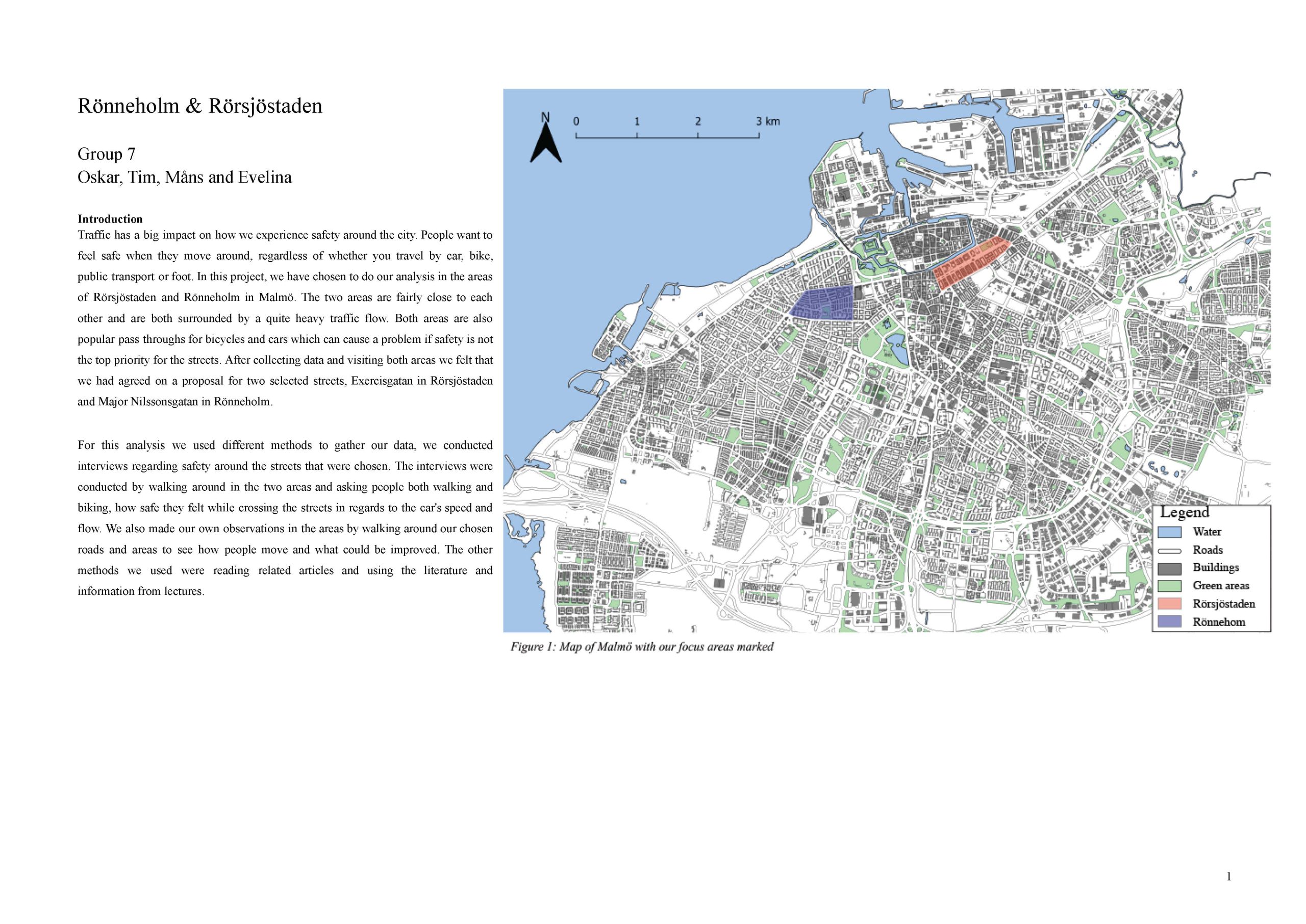 |
Safer Intersections in
Group 7 studies the transport infrastructure and travel patterns in two central areas in Malmö, Rörsjöstaden and Rönneholm. They narrowed their focus down to safety, primarily for cyclists, and discovered |
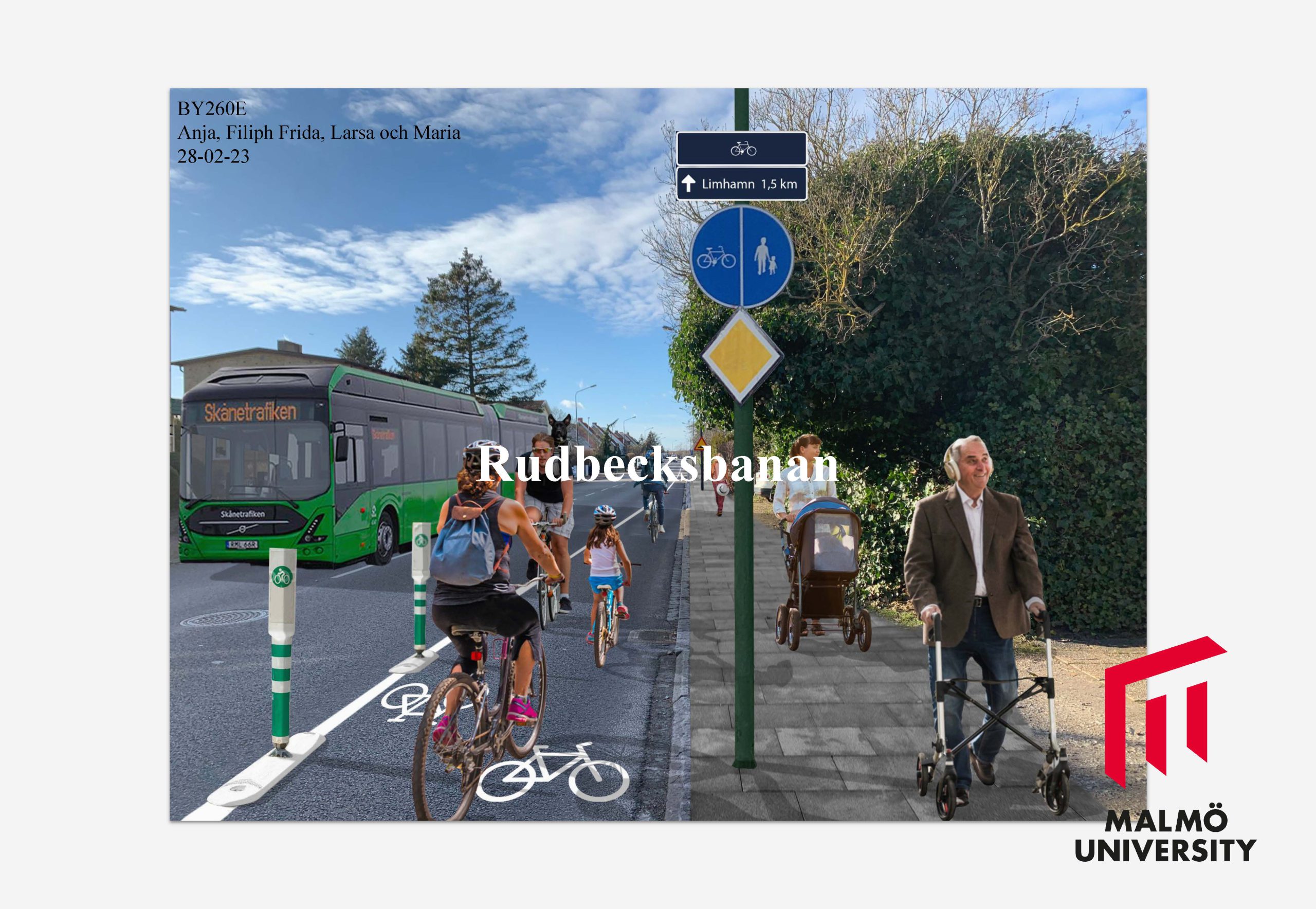 |
Group 8 studies Holma and Gamla Limhamn. They target the existing and potential cyclists in the areas so their improvement proposal concerns bicycle traffic and adjusting Rudbecksgatan for bicycle traffic and connect it to existing bike paths. Moreover, our proposal includes creating prerequisites for safe and efficient bicycling by adjusting Rudbecksgatan for bicycle traffic and connecting it to existing bike paths, implementing increased bike-parking in Gamla Limhamn, and adding more lighting along Rudbecksgatan. Our proposal is another attempt to make Malmö feel smaller, allowing people easier access to different parts of the city. |
